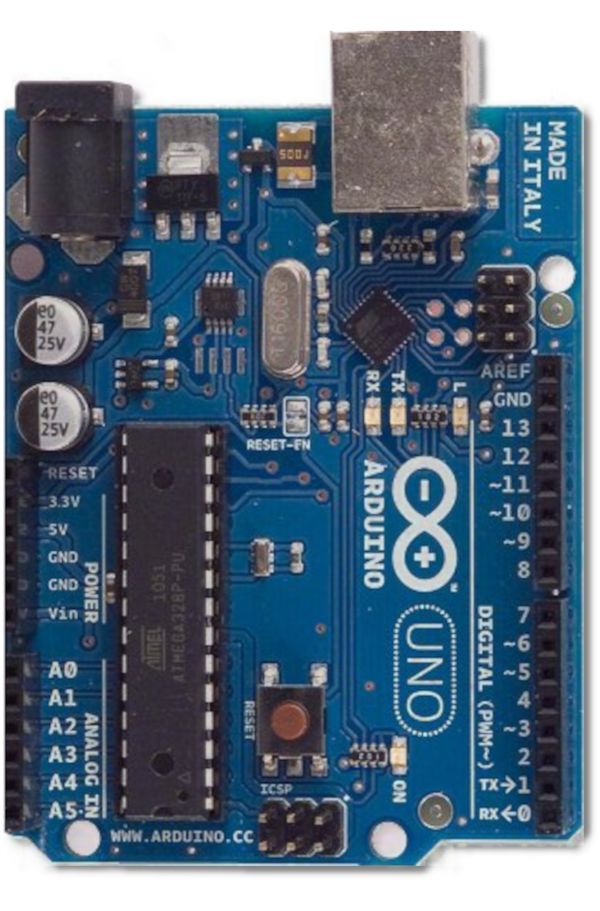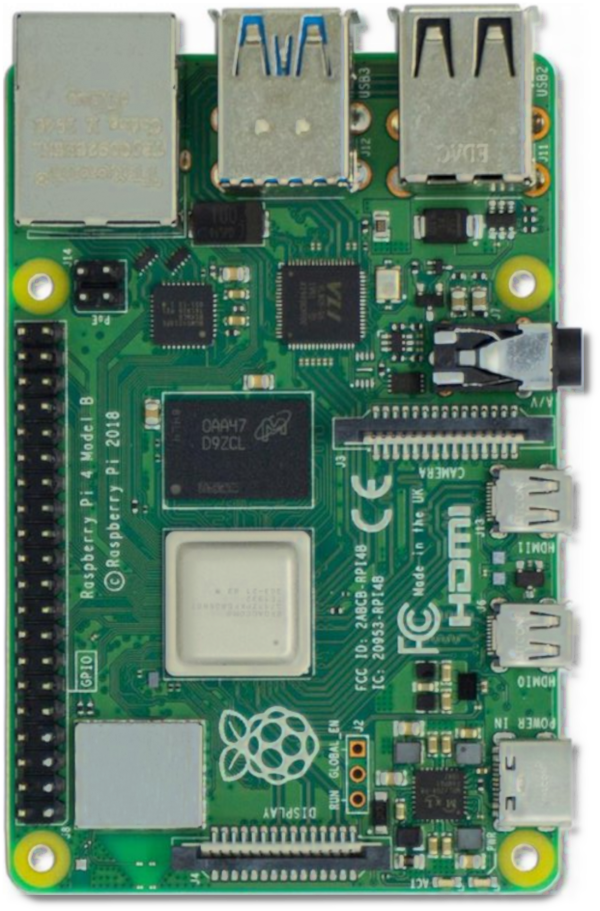The TTY2MQTT command line tool is a bridge between TTY (COM) serial communication and an MQTT message broker and provides a CLI for publishing and subscribing data from and to a serial port from and to an MQTT message broker. You can download TTY2MQTT from this site’s downloads section.
You may operate TTY2MQTT on a Raspberry Pi to which Arduino boards are attached to by USB. The USB connections by default act as serial TTY (COM) connections over USB, so that the Raspberry Pi directly can communicate with the Arduino boards via serial communication. The TTY2MQTT tool now bridges this serial communication to an MQTT message broker.
| IoT | Serial | Edge Computing | Internet | Cloud |
|---|---|---|---|---|
 |
 |
 |
 |
 |
Quick start
First go to the downloads section of this site and download a TTY2MQTT flavor most appropriate for you.
Depending on the executable’s flavor the command might also be named tty2mqtt-x.y.z.jar, tty2mqtt-bundle-x86_64-x.y.z.elf, tty2mqtt-bundle-x86_64-x.y.z.exe, tty2mqtt-installer-x86_64-x.y.z.msi, tty2mqtt-launcher-x.y.z.sh, tty2mqtt-launcher-x86_64-x.y.z.elf, tty2mqtt-launcher-x86_64-x.y.z.exe, tty2mqtt-native-x86_64-x.y.z.elf where x.y.z stands for the version of the tty2mqtt command. The according executable’s name will be referenced to in this manual as tty2mqtt.
Once downloaded and placed into a folder of your choice, TTY2MQTT
can be instructed to create an initial configuration for you:
./tty2mqtt --init: Create an initialtty2mqtt.iniconfiguration file
To get an impression of all the functionality, just go for ./tty2mqtt --help, which shows the tool’s help.
Once configured, you can fire up TTY2MQTT
as follows (make sure a configured MQTT message broker is up and running):
./tty2mqtt: Start the tool
Using the default configuration, sending a message from your serial TTY (COM)
port to the TTY2MQTT bridge
using an Arduino can look as follows:
1
2
Serial.println("@button1:Button 1 pressed") // Use topic "button1" when TTY2MQTT publishes the message
Serial.println("# The button one on the Arduino has been pressed!") // This is a comment, TTY2MQTT just logs this text
The MQTT topic to publish to is button1
and the payload is “Button 1 pressed”. Before this example works, you must configure
your TTY (COM)
port to attach to on the one side and the MQTT
broker to attach to on the other side. Next we will go through the various configuration
properties to, amongst others, do so.
You may prepare multiple configurations and launch
TTY2MQTTmultiple times with the according configuration file as argument, e.g../tty2mqtt --config someConfigA.ini.
Configuration
The initial tty2mqtt.ini is found at the end of this article and may be tweaked
as follows:
MQTT message broker
The MQTT message broker to use is configured
in the [[broker]] portion of the [mqtt] section:
url: TheURLof the message broker in question.user: The user to use when accessing the according message broker.secret: The user’s password to use when accessing the according message broker.
Publishing from the serial port
The MQTT publisher on the serial port
is configured in the [[publisher]] portion of the [mqtt] section:
id: The ID we give the publisher on theserial portto be used when sending MQTT messages to the MQTT message broker.topic: Use this topic in case none is found in the TTY (COM) serial payload (fallback), leave empty if messages without a topic are to be ignored (just logged). A topic can be defined in the serial port’s payload (see configuration further down).
Subscribing to the serial port
The MQTT subscriber for the serial port
is configured in the [[subscriber]] portion of the [mqtt] section:
-
topic: The name of the topic which’s messages are to be passed (subscribed to) from the MQTT message broker to the TTY (COM) port. -
mode: The subscriber mode denotes the mode of operation, either expecting binary (BINARY) or textual (ASCII) data, e.g. what kind of data is being expected to be passed (subscribed to) from the MQTT message broker to the TTY (COM) port: InASCIImode, the message is being terminated by thesuffix, inBINARYmode the message’s binary data is prefixed with a length header, which’s metrics are defined by thelength’swidthandendianessproperties.
Serial port
The serial port is configured in
the section [tty]:
port: The TTY (COM) port to use, e.g.COM1on Windows or/dev/ttyS0on Linux.baud: TheBPSto be used when communicating with the TTY (COM) port.parity: The parity to use when operating the TTY (COM) port, see./tty2mqtt --helpfor possible values.dataBits:The number of data bits to use when operating the TTY (COM) port.stopBits:The number of stop bits to use when operating the TTY (COM) port.
Run
./tty2mqtt --listto list all available TTY (COM) ports.
Serial port messages
The format of a message on the serial port
is configured in the [[message]] portion of the [tty] section:
-
suffix: The suffix identifying the end of a TTY (COM) serial payload. A hex value (e.g.0x00) denotes the actual value, an\ndenotes a newline. -
length: In case themodeproperty is set toBINARY, the length denotes the metrics of the length prefix of the binary data passed to the TTY (COM) port. Thelengthproperty is made up of two sub propertieswidthandendianess:
As the length is composed of two individual properties, the length opens up a new subsection [[[length]]] below the message subsection:
-
width: The number of bytes to use when prefixing the length of the binary data whenmodeis set toBINARYfor data sent from MQTT to the TTY (COM) port (defaults to2, e.g. a maximum 64 Kilobytes). -
endianess: The endianess (BIGorLITTLE) to use for the prefixed length of the binary data when whenmodeis set toBINARYfor data sent from MQTT to the TTY (COM) port (defaults toLITTLE).
Serial port comments
Sometimes it is useful to still use the TTY (COM)
for printing out debugging information. This information must not be forwarded to
the MQTT message broker. In such cases,
the device attached to the TTY (COM)
port may mark its payload as being a comment. The format of a comment on the serial port
is configured in the [[[comment]]] portion of the [[message]] section:
prefix: The prefix character for TTY (COM) serial payloads which just to print out with INFO log level.
To print a comment to the TTY (COM)
port on an Arduino when using the #
character to prefix a comment might look as follows:
1
Serial.println("# The button one on the Arduino has been pressed!") // This is a comment, TTY2MQTT just logs this text
Topics in serial port payloads
The format of a topic embedded in the payload on the serial port
is configured in the [[[topic]]] portion of the [[message]] section:
prefix: The prefix character identifying an MQTT topic.separator: The separator character separating the topic from the actual message.
In general, the layout of a payload containing a topic is as follows:
<prefix>+ “topic” + <separator>+ “message” + <suffix>
For example using the topic prefix “@” and a separator “:”, a payload with a topic and a message might look as follows:
"@button1:Button 1 pressed\n"Printing such a message to the TTY (COM)
port on an Arduino might look as follows:
1
Serial.println("@button1:Button 1 pressed") // Use topic "button1" when TTY2MQTT publishes the message
The instruction
Serial.printlnalready suffixes the text to be printed with a\n, therefore\nis not explicitly specified in the string to be printed.
Configuration file
You can use XML, JSON, YAML or INI (TOML) notations (including plain simple *.properties files with key=value pairs). Below find configurations using INI notation and also using plain properties:
Extended INI notation
Using the INInotation, the configuration is organized by sections embedded in square braces [...].
Note that the hierarchical order of the properties is achieved by the number of nested square braces, e.g. a portion belonging to a section
[...]gets additional square braces as of[[...]]and is placed below the parent section it belongs to.
tty2mqtt.ini
1
2
3
4
5
6
7
8
9
10
11
12
13
14
15
16
17
18
19
20
21
22
23
24
25
26
27
28
29
30
31
32
33
34
35
36
37
38
39
40
41
42
43
44
45
46
47
48
49
50
51
52
53
54
55
56
57
58
59
60
61
62
63
64
65
66
67
68
69
70
71
72
73
74
75
76
77
78
[mqtt]
[[broker]]
url=tcp://localhost:1883
user=heinz
secret=ketchup
[[publisher]]
id=arduino
# Use this topic in case none is found in the TTY (COM) serial payload (fallback),
# leave empty if messages without a topic are to be ignored (just logged):
#
# topic=debug
# Whether or not messages published should be retained by the messaging engine:
#
# retained=true
# Sets the quality of service when publishing messages.
#
# qos=1
[[subscriber]]
# The topic to subscribe to and which's messages are to be sent
# from the broker to the TTY (COM) port.
#
topic=ttyin
# The subscriber mode denotes the mode of operation, either expecting binary ("BINARY")
# or textual ("ASCII") data, e.g. what kind of data is being expected to be passed
# (subscribed to) from the MQTT message broker to the TTY (COM) port. In ASCII mode,
# the message is being terminated by the "suffix", in BINARY mode the message's
# binary data is prefixed with a length header, which's metrics are defined by the
# "length"'s "width" and "endianess" properties.
#
# mode=BINARY
mode=ASCII
[tty]
port=/dev/ttyS0
baud=9600
[[message]]
# The suffix identifying the end of a TTY (COM) serial payload when sending data
# from TTY (COM) to MQTT or when "mode" is set to "ASCII" and passing data from
# MQTT to the TTY (COM). A hex value (e.g. 0x00) denotes the actual value, an '\n'
# denotes a newline:
#
suffix=\n
[[[length]]]
# The number of bytes to use when prefixing the length of the binary data when
# "mode" is set to "BINARY" for data sent from MQTT to the TTY (COM) port.
#
width=2
# The endianess to use for the prefixed length of the binary data when "mode" is
# set to "BINARY" for data sent from MQTT to the TTY (COM) port.
#
endianess=LITTLE
# endianess=BIG
[[[comment]]]
# Just log any TTY (COM) serial payload prefixed with this char with INFO log level:
#
prefix=#
[[[topic]]]
prefix=@
separator=:
Java properties notation
This notation uses plain simple files with key=value pairs for each line.
Note that the hierarchical order of the properties is achieved by representing the properties with a path alike notation.
tty2mqtt.properties
1
2
3
4
5
6
7
8
9
10
11
12
13
14
mqtt/broker/url=tcp://localhost:1883
mqtt/broker/user=heinz
mqtt/broker/secret=ketchup
mqtt/publisher/id=arduino
mqtt/subscriber/topic=ttyin
mqtt/subscriber/mode=ASCII
tty/port=/dev/ttyS0
tty/baud=9600
tty/message/suffix=\n
tty/message/comment/prefix=#
tty/message/length/width=2
tty/message/length/endianess=LITTLE
tty/message/topic/prefix=@
tty/message/topic/separator=:


